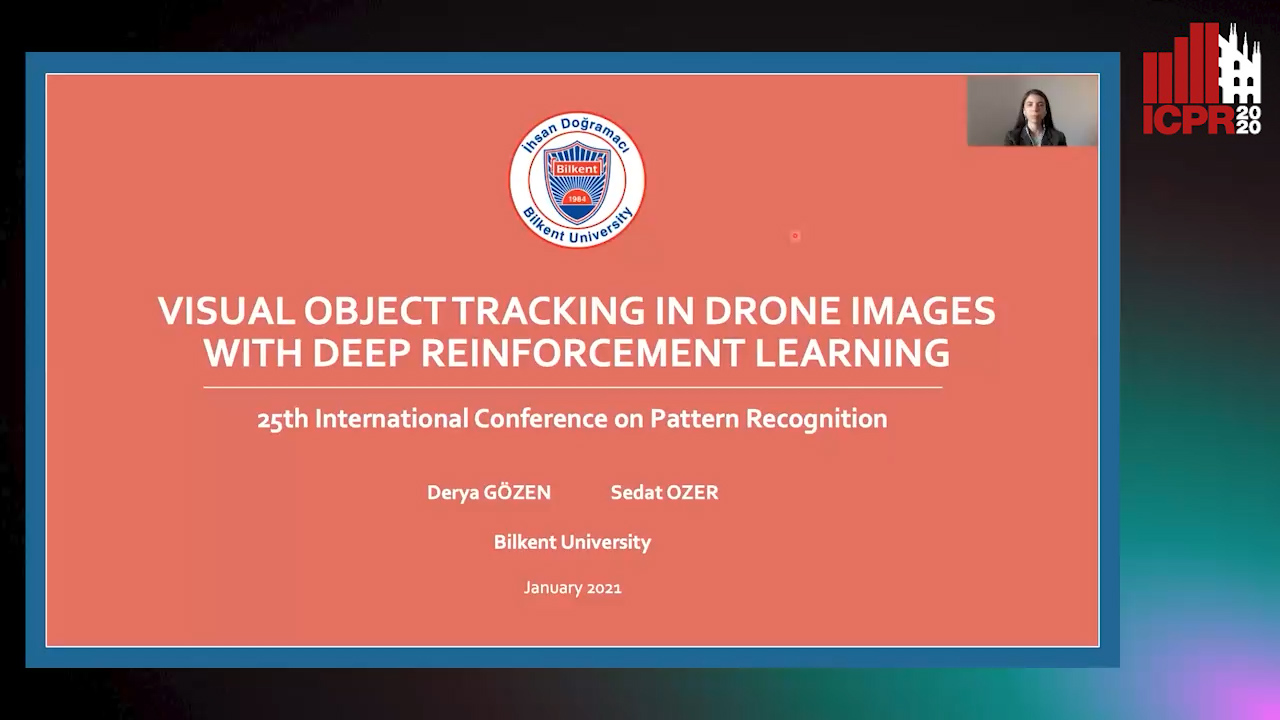Derya Gözen
Paper download is intended for registered attendees only, and is
subjected to the IEEE Copyright Policy. Any other use is strongly forbidden.
Papers from this author
Visual Object Tracking in Drone Images with Deep Reinforcement Learning

Auto-TLDR; A Deep Reinforcement Learning based Single Object Tracker for Drone Applications
Abstract Slides Poster Similar
There is an increasing demand on utilizing camera equipped drones and their applications in many domains varying from agriculture to entertainment and from sports events to surveillance. In such drone applications, an essential and a common task is tracking an object of interest visually. Drone (or UAV) images have different properties when compared to the ground taken (natural) images and those differences introduce additional complexities to the existing object trackers to be directly applied on drone applications. Some important differences among those complexities include (i) smaller object sizes to be tracked and (ii) different orientations and viewing angles yielding different texture and features to be observed. Therefore, new algorithms trained on drone images are needed for the drone-based applications. In this paper, we introduce a deep reinforcement learning (RL) based single object tracker that tracks an object of interest in drone images by estimating a series of actions to find the location of the object in the next frame. This is the first work introducing a single object tracker using a deep RL-based technique for drone images. Our proposed solution introduces a novel reward function that aims to reduce the total number of actions taken to estimate the object's location in the next frame and also introduces a different backbone network to be used on low resolution images. Additionally, we introduce a set of new actions into the action library to better deal with the above-mentioned complexities. We compare our proposed solutions to a state of the art tracking algorithm from the recent literature and demonstrate up to 3.87\% improvement in precision and 3.6\% improvement in IoU values on the VisDrone2019 dataset. We also provide additional results on OTB-100 dataset and show up to 3.15\% improvement in precision on the OTB-100 dataset when compared to the same previous state of the art algorithm. Lastly, we analyze the ability to handle some of the challenges faced during tracking, including but not limited to occlusion, deformation, and scale variation for our proposed solutions.